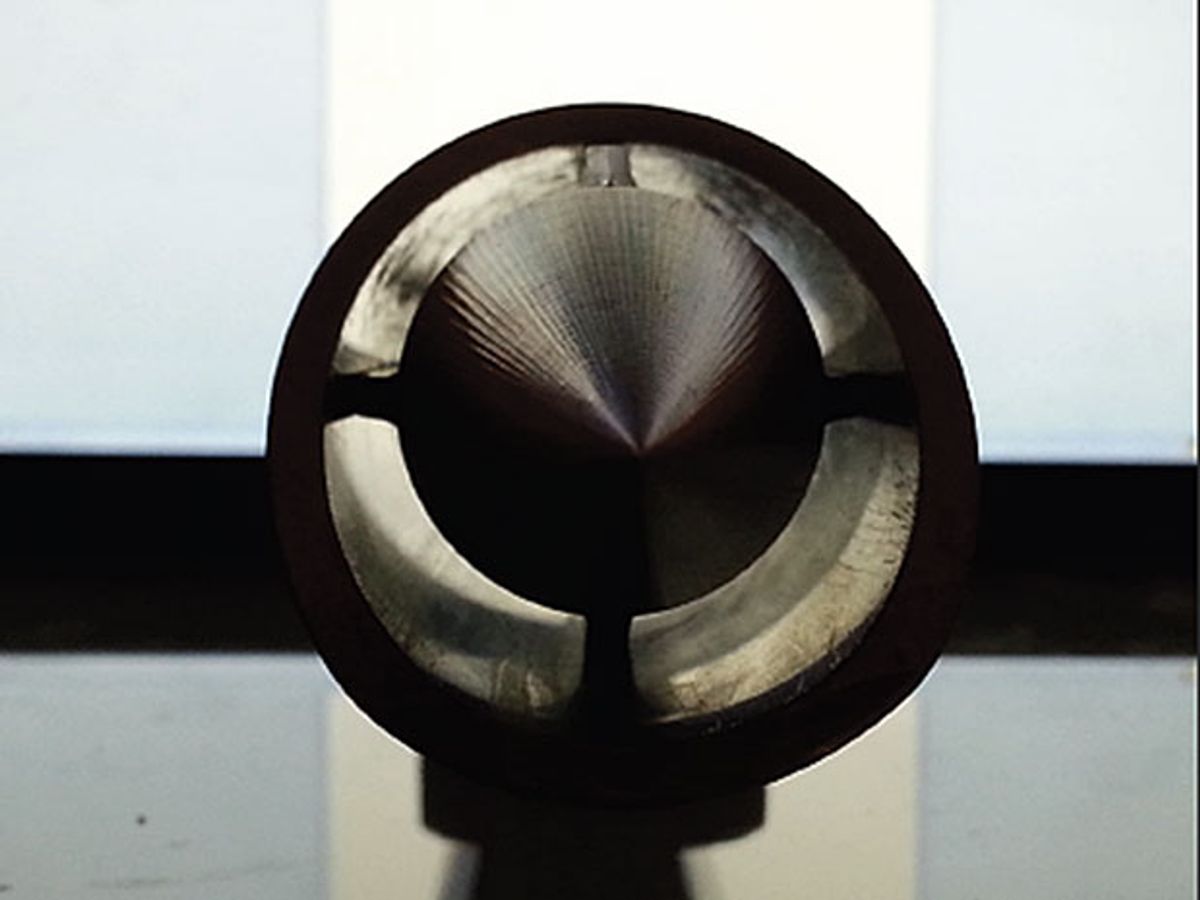Geothermal energy might be the most appealing of all renewables. Unlike wind, solar, or even wave or tidal energy, it produces constant and reliable long-term power. Iceland has got this all figured out, but they have it easy. The entire country is (luckily) perched on top of an active volcano. For the rest of us, tapping into geothermal power is harder, because you have to dig for it: About 5 kilometers down, you can find rock hot enough to turn water into steam.
The average depth of an oil well is only about a kilometer and a half, and drilling down to 5 km (especially through hard rock) using conventional technology isn’t trivial and definitely not worth the cost. A company called HyperSciences thinks it has a better way. It wants to harness geothermal energy with a new kind of drilling technology that does away with the “drill” bit completely, using projectiles fired into the ground instead.
It’s simple, really: Instead of slowly grinding away at rocks with drill bits that perpetually wear out, just shoot holes in the ground with bullets. According to HyperScience, you can bore a hole ten times faster than traditional drilling equipment this way.

If you’re picturing someone upending a howitzer and repeatedly firing into the dirt, that’s not quite the right idea. The word “hypervelocity” implies that the projectile is moving at speeds greater than 2 km/s, potentially much greater. With this much energy behind it, projectiles interacting with surfaces (like rocks) behave more like fluids than solids, and generally, they vaporize on impact, adding to their energy and leaving you with a nice clean, deep hole. Want a deeper hole? Just fire more projectiles.
The gun doing the firing is called a ram accelerator, and it’s really a gun with a ramjet mounted on the end of it. The projectile is fired out of the gun and enters a series of tubes containing mixtures of air and combustable gasses. The shape of the projectile compresses the gasses as it passes through them, and they’re ignited behind the projectile, propelling it forward to velocities of multiple kilometers per second.
We don't have much more information on HyperSciences beyond what’s in this patent (the website is sparse, to say the least), NASA has been doing hypervelocity research for decades in an effort to experimentally investigate asteroid impacts, which typically occur at tens of kilometers per second. They use a light gas gun to accelerate small (marble-sized) projectiles to speeds of around 7 km/s, and then they watch what happens when those projectiles smash into things.
A light gas gun is, more or less, a very powerful airgun. At the back, you have a large piston in a large gas chamber, and at the front, you have a small barrel with the projectile in it. By rapidly accelerating the piston (usually with a gunpowder charge), you rapidly compress the gas in the gas chamber, and when you force that gas into the much smaller diameter barrel, it acts like a lever to increase the speed of the gas, accelerating the projectile. Usually, gas guns use hydrogen instead of air, because the limiting factor to the final speed of the projectile is how fast the shockwave can propogate through the gas (the speed of sound, in other words), which is nearly four times as fast in hydrogen as it is in air.
Anyway, here’s how it looks when they fire the thing off:
That flash you see is the projectile (a 3-milimeter-diameter bit of aluminum) vaporizing on impact. While it was shot at an angle that’s just 30 degrees from horizontal, you still get a more or less spherical crater, because the projectile isn’t pushing material out of the way, it’s releasing a whole bunch of energy into a spherical shockwave. This is why almost all of the craters that you see on the moon (or anywhere else) are round, even though the odds of something impacting something else at exactly 90 degrees are very small.
So, the technology of accelerating things to ludicrious speeds is well-established, and if the energy released by the projectile can be directed downwards on impact as opposed to outwards, it doesn't seem too crazy to suggest that you might be able to vaporize solid rock. HyperSciences has backing from Shell's GameChanger program to the tune of nearly US $1 million, and the company expects to raise a bit more cash. It plans to demonstrate the technology within the next six months.
Evan Ackerman is a senior editor at IEEE Spectrum. Since 2007, he has written over 6,000 articles on robotics and technology. He has a degree in Martian geology and is excellent at playing bagpipes.



